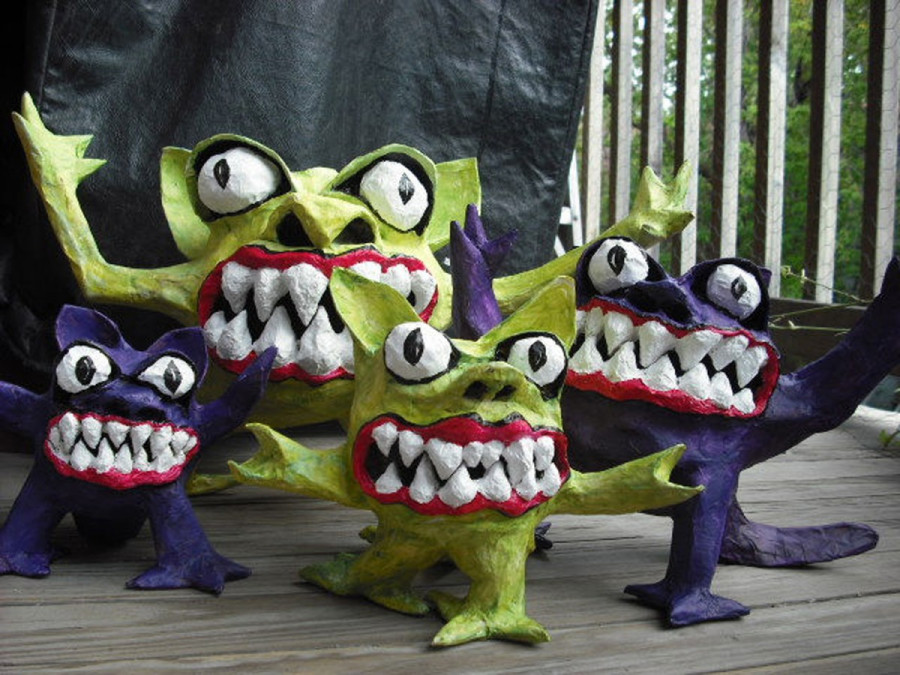Artistically Accessible
Usine 106U’s Art is Anything but Ordinary
Usine 106U is jam packed with art. The walls are covered from floor to ceiling, salon style, but the content is anything but.
Sculptural, textural, hilarious and vulgar, art makers deemed ‘thematic outcasts’ find home here.
Co-founder and operator Éric Braun describes the five-year-old gallery as an “accident child” turned brainchild between a few friends deciding to hold a week-long art show, creating live art amongst an audience of potential buyers.
The show was extended to a month long and now they are the renting occupants of the small but accommodating space at 160 Roy St. E.
The idea that started it all—the accessible acquisition of art—has been a running theme throughout Usine 106U’s existence, in distribution and experience. Everything that’s up is for sale and many of the pieces in the gallery are Braun’s , who explained “I have to pay myself!” to promote accessibility to art and financially sustaining the independent space.
This is primarily what makes Usine 106U different from its peers. Braun and the gallery’s other contributors have complete freedom as to what is displayed, as opposed to an art space funded by grants.
“We cater to the unusual. Some of it goes pretty far and some of it is pretty risky. […] We’re [also] focused on figurative art, which is unconventional,” said Braun.
“We cater to the unusual. Some of it goes pretty far and some of it is pretty risky. […] We’re [also] focused on figurative art, which is unconventional,” said Braun. “If you get a grant you don’t have to sell and they mostly show the work and it’s not their intention to sell. Our concept is all about shopping for something. It’s not museological.”
There are about 30 different artists shown at a time at Usine 106U, given four-and-a-half square feet of space. For this the exhibitors pay $50 for the month, and give back 10 per cent commission of what’s sold. Braun says this covers everything.
“It’s worth it in the long run. You get some quiet times, some busy times,” he said. This system is quite the turnaround from a typical grant-funded gallery
“There’s a lot of attention being paid to non-figurative, abstract installations which can’t really be sold,” said Braun. “Sometimes with installations you go, you experience it, you can read the [artist’s statement] if you want to, but that’s it. You can’t buy it.
“Here it’s more like pieces with a narrative, pieces that say something. Sometimes people feel like the piece is talking to them and they want [it] to be a part of their life. We want to cut the bullshit so that it’s just you and the art. We aren’t going to tell you a whole story about why you should like this and pay five figures.”
This Wednesday marks the opening of a new exhibit at Usine 106U, Vanité, with a vernissage Thursday from 5:00 to 11:00 p.m. Given the unpredictable nature of what’s already housed in the gallery, the exhibit should cater to one who likes their art anything but ordinary.
“Some of it will be a surprise,” said Braun. “There’s a lot of pieces that are related to Dia de los Muertos, the day of the dead festival. Lots of skulls. Sort of pre-Halloween festival.”
If accepting the unusual is what makes the work in Usine 106U typical of this space, the pretence of Halloween could be the perfect time to experience this unique space.
Vanité / Usine 106U (160 Roy St. E.) / Vernissage Oct. 6


